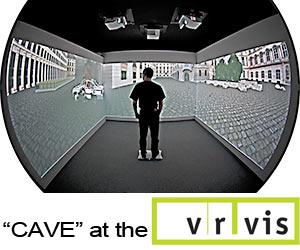News
| March 2020 |
UPDATE 2020: Normally, the lecture would start end of March. Due to the current pandemic and the hands-on approach of the lecture, I do not know how and when I wiil be able to hold this lecture. You can enroll via email, when I have your mail I can send out information as soon as I know what to do. Otherwise watch this page for updates. |
|
|
VRVis has moved! |
| Introduction/Start of lecture: Room#HA0509 ("Besprechungsraum"), Favoritenstr. 9, 5. floor Since all the administrative information is dealt with in the introduction, students not attending may miss out on hardware reservations, exam info and additional topics. So be there or send a mail. SS 2.0, 186.156 VU, by arrangement Since the practical part of the lecture is limited by the available hardware resources, only a limited number of students/workgroups can be accepted. Written midterm & final exam Lecturer: Anton FuhrmannLater lectures will be held at the VRVis research center, dates by arrangement. |
Examination
Written exams at midterm and end of semester.
Lab project
Additionally, you will have to finish a short VR lab project:
- 1-2 students per group
- must be finished within 3 months
- work@home or @VRVis
- may be own themes
- development environment: HTC Vive, Unity
General Information
This course describes devices and techniques used in Virtual Reality applications. It is intended to serve as an introduction into the practical implementation of VR and deals directly with the problems and the special circumstances in the realization of a virtual environment.
It is complemented by the course Virtual Reality in the winter term.
During this course students will gain practical experience with VR-devices and applications, like the ones depicted on the right.
Main Contents:

- history of VR
- 3D display hardware:
- stereo projection
- auto stereoscopic displays
- head-mounted displays (try our Oculus DK2!)
- 3D input hardware:
- tracking (optical, magnetical, inertial, mechanical, ...)
- depth imaging
- haptic feedback
- "exotic" devices: stimulate smell, balance, 3D scan...
- VR set-up integration specifics
Recommended prerequisites:
- english reading skills (obviously)
- Computergraphics course
- interest in real-time graphics, virtual reality methods and hardware
Additional information:
In addition to the written exam, student will implement a simple (or even complicated, if you want) VR-application.
Teamwork is possible and will be encouraged. Students can implement their work at home, but due to the hardware-dependent nature at least part of the development has to be performed at the VRVis research center.
Attachments
| Attachment | Size |
|---|---|
| AdvancedTopicsVR_Vorlesung_2019_Displays_1.pdf | 3.27 MB |
| AdvancedTopicsVR_Vorlesung_2019_Displays_2.pdf | 1.89 MB |
| AdvancedTopicsVR_Vorlesung_2019_Tracking.pdf | 3.33 MB |
| AdvancedTopicsVR_Vorlesung_2019_Systems.pdf | 5.48 MB |
